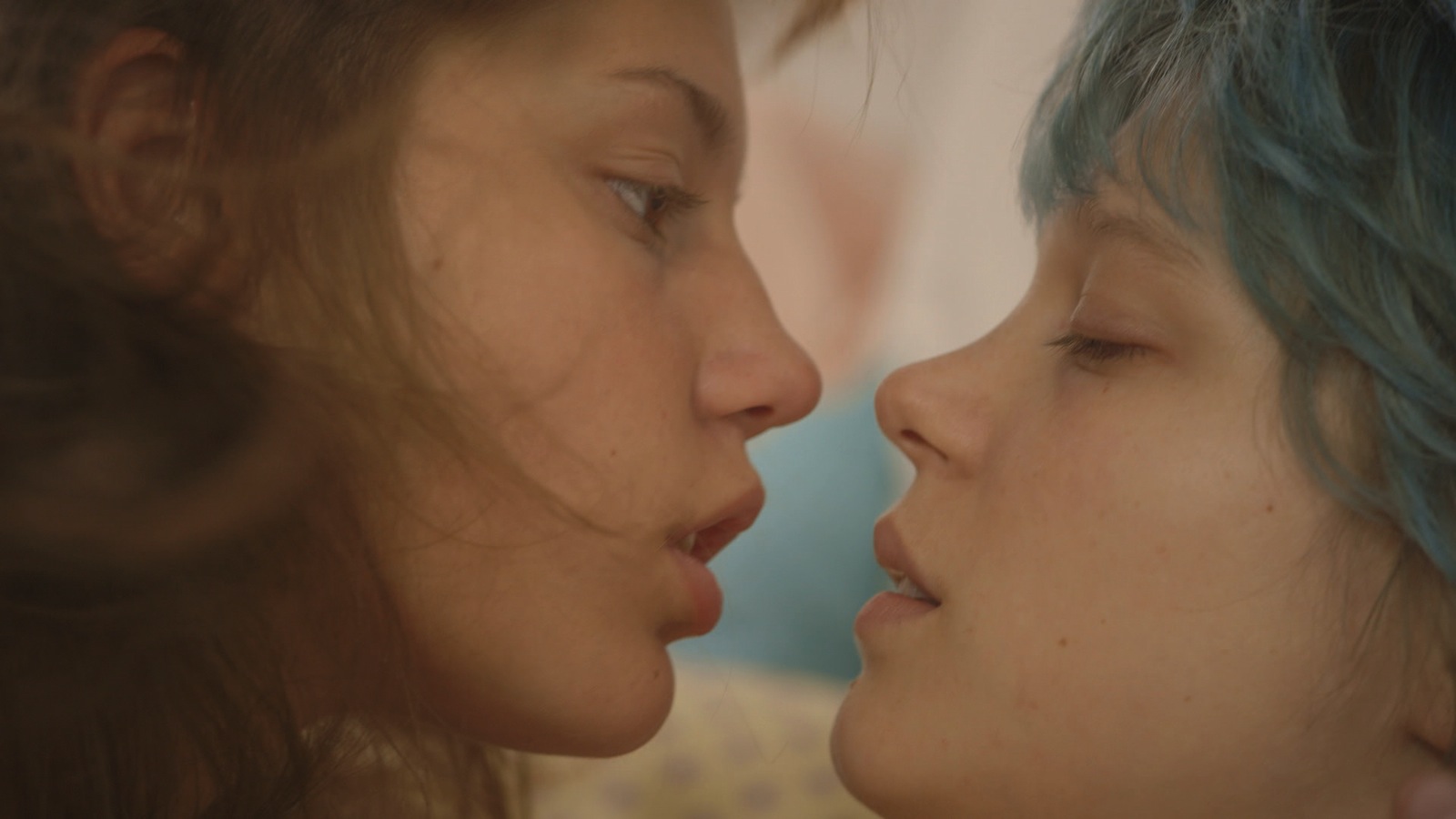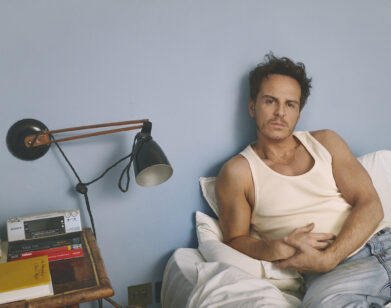Abdellatif Kechicheâ??s Two Women

ADÈLE EXARCHOPOLOS (LEFT) AND LÉA SEYDOUX (RIGHT) IN ABDELLATIF KECHICHE’S BLUE IS THE WARMEST COLOR. COURTESY OF SUNDANCE SELECTS
Abdellatif Kechiche, the Franco-Tunisian director of The Secret of the Grain (2007) and Black Venus (2010), is a man with politics on the mind. His films, consistently socially-minded, have exacted struggles and strife based on race and class, and this preoccupation provides the underpinning of his latest film, Blue is the Warmest Color (or in French, La vie d’Adèle).
Blue, an adaptation of Julie Maroh’s graphic novel of the same name, has been dogged with controversy since its premiere at Cannes this past May. It is a sprawling, messy, and painfully realistic portrait of first love, told through the viewpoint of Adèle (newcomer Adèle Exarchopoulos), a high-school girl from a working class family in the north of France, who crosses paths with a confident, cultured, blue-coiffed art student Emma (Léa Seydoux). Kechiche captures each stage of the emotionally and sexually consuming relationship, from its first inception to the explosive rupture that ends it. Every angle of Adèle, from the first scene of her shuffling to catch the bus to school tying her hair in a pert, unruly topknot, to the nervousness in which she inserts her hoop earrings before awkwardly attending Emma’s latest painting exhibition post-breakup, is shown unflinchingly, and portrayed devastatingly by Exarchopoulos.
Kechiche won the Palme d’Or for his efforts, and the award, traditionally given to the director only, included Seydoux and Exarchopoulos, the only women aside from Jane Campion to have been awarded the prize. Criticized by Maroh for the film’s explicit sexual scenes, and even by Seydoux and Exarchopoulos for the demanding working conditions on set, Kechiche remains engaged in the film’s tangential explorations of love and class.
We spoke to Kechiche shortly before Blue screened at the New York Film Festival.
COLLEEN KELSEY: The movie is a love story between two women. It’s a very feminine story, told from the female experience. Why did you want to tell this story, and how did you approach making a film from the female point of view?
ABDELLATIF KECHICHE: There are certainly some deep reasons that I didn’t really delve into too much. Female characters are always, to me, more interesting because they are more attractive, more mysterious. So two female characters could only augment or multiply the sort of attracted-ness and magnify the mysteriousness of the interaction. But thematically, what really interested me the most was a love story between two women, or two people that came out of very different social milieus. And to deal with the breakup, which is the result of belonging to different social milieus.
KELSEY: Did you find that the interest in the class structure was much more compelling than exploring a same-sex relationship, which is also politically concerned?
KECHICHE: Despite the fact that the subject of a lesbian relationship is not that physical in cinema, and the challenge being that you don’t want it to become a militant statement, I actually believe that the other themes in the film, specifically the social class division—there’s a gap—are problems that are even more important in our society.
KELSEY: How did you approach adopting the film from the graphic novel?
KECHICHE: The graphic novel is very short. I mean, if you do a screenplay taken from it, it is a two-page screenplay. So it’s more of a film treatment and building scenes at a second reading. So you know, starting with a photograph, you have to develop entire scenes that are living and breathing. So it was really just a starting tool.
KELSEY: I am also curious about the psychology of Adèle and how the character progresses throughout the film. How do you see her psychology progressing from the very beginning?
KECHICHE: I see her as basically being a person who is open to experimenting with life. So we are witness to a launching point for the character, which is loving and courageous, and really, which is the portrait of a free woman.
KELSEY: And how did you go about casting Adèle and Léa for the film?
KECHICHE: Well you know, it’s hard to say why one is attracted to a particular actress but as a starting point, already, you had two actresses who come from very different social milieus. One of them comes from an extremely wealthy, bourgeois, very comfortable milieu, and the other one comes from something that is definitely much more modest. I think [that] created already an interaction between the actresses that was very interesting.
KELSEY: What I found to be very powerful about the film was how natural and true to life it was. I know you have a particular style of shooting with many takes, working on a scene for a long time. Do you feel like that effort yields a natural and true result in the film?
KECHICHE: You know, it depends on what the needs are. Sometimes we do a lot of takes because there’s something that we find that is not pretty, and isn’t working. And other times we do a lot of takes because there are so many possibilities and so many nuances and we are having trouble choosing which one is actually going to be the one that is the right fit. But things don’t necessarily require a lot of takes. And I am not a champ in terms of that.
KELSEY: There has been a much-publicized controversy between yourself and the actresses. I know you said before you were feeling hesitant about releasing the film with all of this, but do you feel the same way now?
KECHICHE: What happened subsequent to the film being screened at Cannes is regrettable. I don’t think it’s very respectful vis-à-vis the spectator, the audience. There are so many contradictions in Léa Seydoux’s attitude. You know, you can only ask yourself questions as to why she would spread such untruths. And I think there are some ill-intentioned people that kind of pushed her in that direction. But I would also like to underscore the fact that I am not making my remarks with her grandfather [Jérôme Seydoux, chairman of major French studio Pathé] in mind, and I don’t think that he is in any shape or form responsible for anything that happened. There are people around that are much more perverse and lacking in courage that pushed her, I think, in this direction.
BLUE IS THE WARMEST COLOR OPENS THIS FRIDAY, OCTOBER 25, IN LIMITED RELEASE.






